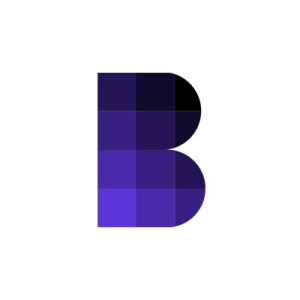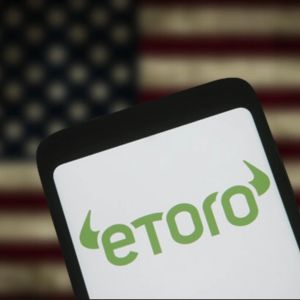Tokenized Real-World Assets Surge in 2025 as TVL Climbs 40% Year-to-Date
4 min read
In a year filled with changing stories and new investor interests, one theme has risen to undeniable prominence in the crypto space: tokenized real-world assets (RWAs) . Once a barely noticed niche within decentralized finance, RWAs have become one of the most exciting and rapidly growing sectors in blockchain. Year-to-date, the total value locked (TVL) in tokenized RWAs has jumped from approximately $8 billion in January to over $11 billion today—representing a 40% increase in less than five months. Tokenized real-world assets are the key success story of this year. Sector TVL has climbed from roughly $8b in January to more than $11b today; a 40 % YTD surge. BlackRock’s BUIDL leads at ≈$2.5 B, but others like Ondo Finance, Superstate’s USTB, and Paxos Gold are also… pic.twitter.com/SW9eaX5bKv — IntoTheBlock (@intotheblock) April 29, 2025 This momentum emphasizes the increasing desire of both institutional and retail investors for blockchain-based assets that are underpinned by tangible, off-chain value. From tokenized government bonds to real estate and commodities, RWAs are connecting traditional finance and DeFi, offering an appealing mix of stability, transparency, and liquidity. BlackRock Leads, but the Ecosystem Broadens The most prominent player in this burgeoning market is none other than financial titan BlackRock. Its tokenized fund, BUIDL, has emerged as the RWA sector’s clear frontrunner, boasting a TVL of approximately $2.5 billion. BUIDL allows accredited investors to gain blockchain-native exposure to U.S. Treasury bills—a reliable yield-bearing asset—without needing to exit the crypto ecosystem. However, BlackRock is not the only company in this position. Many other platforms have recently made significant improvements, seeing their overall strength as a sector reinforced. Ondo Finance, for example, has been attracting lots of positive attention for its offering of tokenized bond products, which are very much akin to the traditional low-risk, fixed-income investments that most people, including retired folks, tend to favor. Likewise, Superstate has been winning a lot of fans with its “safe, risk-free” tokenized version of a U.S. Treasury, which it dubs a “USTB.” Indeed, Superstate makes its token in tandem with Paxos, which also recently impressed many people in the financial sector with a “safe, risk-free” tokenized version of gold. Investors are placing their priorities in a different direction, and these products show why. In a world of upended market cycles and stifling regulatory watchfulness, the tokens representing real-world assets might help assuage some of the risk—if they can’t, and the upending and watchfulness continue, they’ll likely be as ill-fated as many other touted solutions this past decade. Retail Traders Embrace Real-World Utility Retail interest in RWAs has surged, especially concerning tokenized real estate and income-producing rental asset opportunities. This past week has shown that $HOUSE , $RENTCOIN, and $TOFI are the most actively traded tokens backed by real-world assets, a sign that the crypto-native user base is engaging with these products. – A token representing fractionalized ownership in real estate properties, $HOUSE led the way, with more than 34,400 traders in the past seven days. – A token linked to rental revenue streams, $RENTCOIN trailed a bit behind, with 17,500 traders. TOFI, which concentrates on tokens and farms, along with assorted agricultural assets, had 14,300 traders involved. Top Real World Asset tokens by trader activity (7d): $HOUSE – 34.4K traders $RENTCOIN – 17.5K $TOFI – 14.3K Tokenized real estate? It’s not just theory anymore. pic.twitter.com/AY3yZXGXgP — Nansen at TOKEN2049 (@nansen_ai) April 30, 2025 These tokens are frequently found on decentralized exchanges and are backed by documentation resembling NFTs and revenue-sharing smart contracts, making them incredibly accessible to the average crypto user. To top it off, the opportunity to own an undivided interest in a house or farm comes without any of the usual paperwork or geographic restrictions, allowing us to tap into a previously underserved global market of micro-investors. Real Revenue, Real Adoption RWAs appeal not just because they are transparent and accessible but also because they hold out the promise of real revenue. Where speculative tokens rely on hype or tokenomics games, RWAs are underpinned by cash-flow-generating assets. The appeal of RWAs lies not only in their transparency and accessibility but also in the promise of real revenue. Unlike many speculative tokens that rely on hype or tokenomics games, RWAs are underpinned by cash-flow-generating assets. The DeFi platforms’ composability means these tokens can become collateral, be lent out, or incorporated into yield farming strategies—further enhancing their utility and making them so desirable. Regulators are beginning to tell apart the speculative digital assets and tokenized versions of real-world financial instruments. This is happening as the momentum in the sector, more specifically in the field of tokenization, is reaching new heights. Firms like BlackRock entering the space only provide more evidence of the regulatory legitimacy of real-world assets, which is likely to push broader adoption ahead. Looking Forward The narrative around real-world assets shows no signs of slowing as we advance into 2025. These tokenized assets are not just a trend; they are a structural shift in how value is represented, accessed, and exchanged in a digital economy. They are certainly not just the province of retail investors. Real-world assets are a reliable means of scaling up access to the digital economy for the vast majority of us who do not live in Silicon Valley. Disclosure: This is not trading or investment advice. Always do your research before buying any cryptocurrency or investing in any services. Follow us on Twitter @nulltxnews to stay updated with the latest Crypto, NFT, AI, Cybersecurity, Distributed Computing, and Metaverse news !

Source: NullTx



